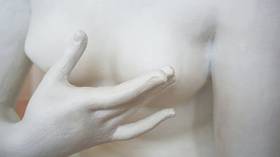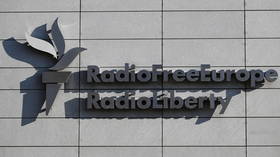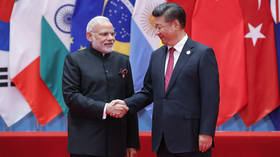Art museums turn to OnlyFans to display nudes as social media sites censor artistic expression, but is it just canny marketing?

Viennese institutions are using a website used by individuals to sell sexually explicit content, complaining that platforms like Facebook suppress artistic expression. That’s true – but is this simply a publicity stunt?
Leading museums in Vienna have turned to OnlyFans in a bid to circumvent social-media restrictions on institutions that exhibit nude paintings and sculpture.
Adults only
The museums in Vienna feature many nudes. In particular the Leopold Museum, which houses art by Egon Schiele and Gustav Klimt, has many explicit erotic nudes. Facebook, Instagram, Tumblr, TikTok and other sites restrict or ban nudity. The Albertina Museum had its TikTok account suspended because of the display of a photograph by Japanese photographer Araki. Araki is known for his nude photography but the displayed photograph was apparently not explicit.
In an outreach attempt, a number of major museums use TikTok for promotion. The Metropolitan Museum in New York even partners with the China-based company. The aim is to reach younger people and children. Yet there are missteps. Crass attempts at promoting high culture through low culture have resulted in one of the world’s great museums using profanity-laden rap music. The Uffizi in Florence combined the visuals of a Botticelli painting with a rap song in a TikTok video.
A problem with all this is that it encourages those who are not used to museums to consume culture in bite sizes rather than take time to learn about context. It also misleads children into assuming museums are busy, noisy places where physical interaction is encouraged – which is the exact opposite of appropriate museum etiquette. Museums have already fallen foul of technology. Encouraging visitors to take selfies with art (to increase online exposure) eventually led to a ban on selfie sticks after a number of accidents and near misses in museums.
Members-only adult site OnlyFans features nudity, so there should be no problem with Vienna museums’ art. Yet anyone searching online can easily find the pictures, either on the museums’ websites or other sites. So, why would the Viennese museums need an OnlyFans account? There is a suspicion that this is just a move to generate publicity or to make a point with those enforcing regulations at social-media sites. It seems to have worked.
Also on rt.com Aristotle and Plato must go. After targeting statues, race activists now aim to topple the ancient founders of Western thoughtPrudery or programming?
Facebook censored a post by Toerisme Vlaanderen, a Belgian regional board promoting cultural activities, because it included nude figures by Rubens. Facebook has also censored fine-art paintings offered by auctioneers. There may be a problem with the website’s AI using algorithms to detect nudity automatically and not differentiating between photographs and paintings. However, that excuse cannot apply to the case of the firmly non-realistic prehistoric stone carving called the Willendorf Venus. The 30,000-year-old sculpture could not be mistaken for a real person, unless Facebook’s AI is woefully inaccurate.
As well as art lovers, feminists and health campaigners have complained about social media sites failing to distinguish between documentation and erotica. The cases of women posting photographs of themselves breastfeeding or displaying post-operative surgical scarring have been marked as explicit and removed by sites, though these images have sometimes been restored following appeals. Equal-rights campaigners object to the fact that images of female nipples are censored, whereas male ones are not.
Social-media sites are not acting in a transparent or reasonable way but museums are also using this fact to promote themselves.
Also on rt.com Creating a ‘Brave New World’: Rather than guarding Britain’s national treasures, woke museum curators want to dispose of themCultural vandalism or canny marketing?
This is not new. Nothing excites more interest than suppressed material. In 1960, there was an attempt by British authorities to censor D.H. Lawrence’s sexually explicit novel ‘Lady Chatterley’s Lover’. Penguin Books succeeded in a court case, which caused widespread public controversy. In the six weeks before Christmas 1960, Penguin sold two million paperback copies of the novel – enough for one copy for almost 4% of the British population at the time.
This continues today. Objections to the censoring of the Willendorf Venus were used by publisher Phaidon as a means of promoting their book ‘The Art of the Erotic’. In 2019, Spencer Tunick organised a mass strip outside Facebook’s headquarters. Such protests are effective ways of encouraging objectors to censorship to express solidarity by backing creators, publishers and venues, which just happens to increase their profile, visitor numbers, or income.
It always pays to take a step back and assess the motives behind the headlines. After all, the only reason you are reading about Viennese art museums on RT today, is because of a canny decision by someone in the Vienna Tourism Board press department.
Like this story? Share it with a friend!
The statements, views and opinions expressed in this column are solely those of the author and do not necessarily represent those of RT.













